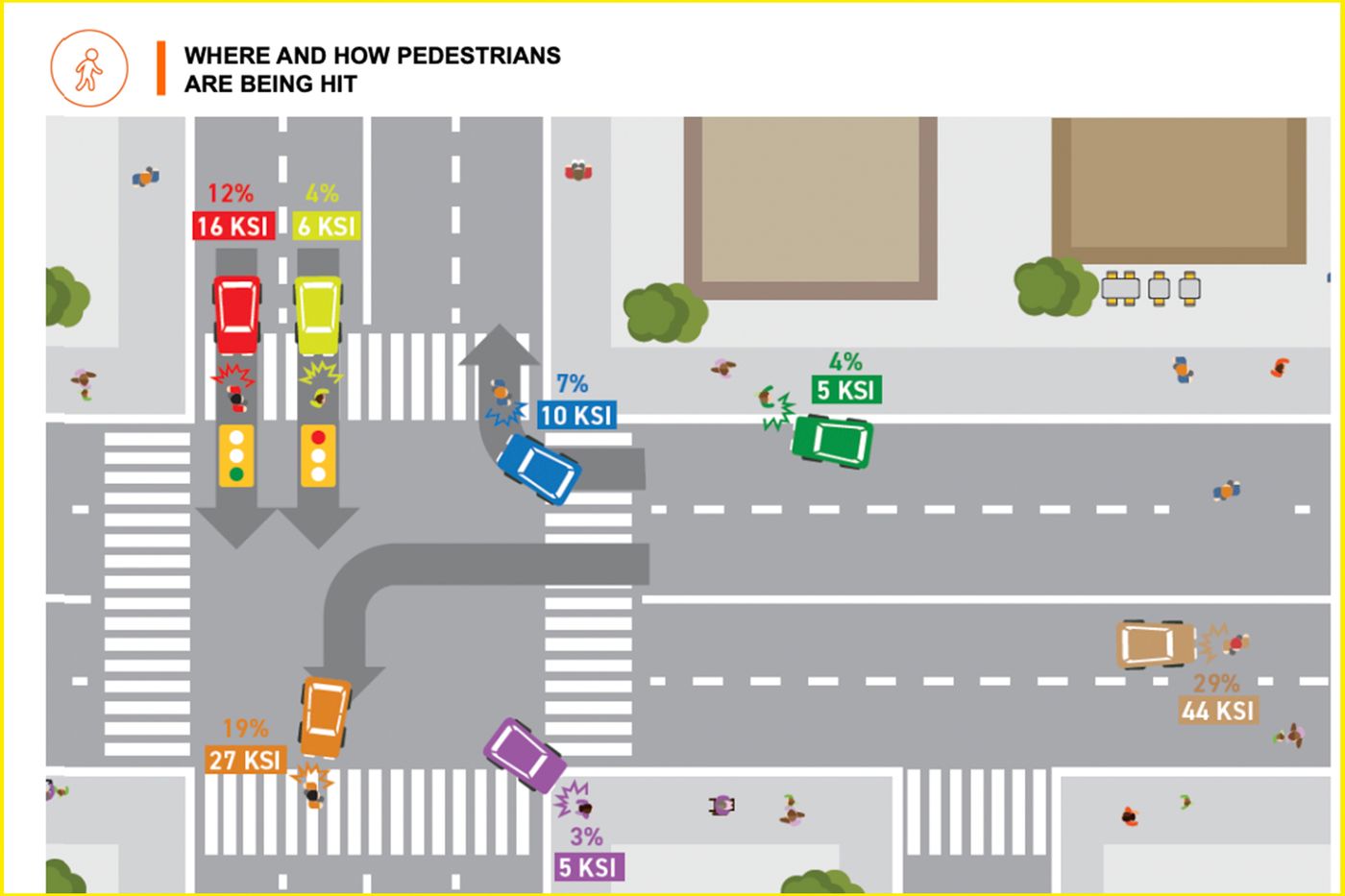All eyes are on Toronto’s roads as we brace for the changes to come as part of Bill 212, the divisive set of laws just passed this week that lets Doug Ford’s government have ultimate say regarding all new — and some existing — bike lanes across the province.
Many fear what the veto on cycle paths that replace a traffic lane will mean for the safety of road users who aren’t behind the wheel, especially given the legislation’s preposterous wording that prevents anyone from suing the province “as a direct or indirect result of the removal of a bicycle lane, part of a lane, or any related features or adjacent infrastructure.”
But there is another demographic that is significantly more vulnerable on the city’s streets than cyclists, per City data — pedestrians, of course.
A new report on road user injuries and fatalities shows that while one cyclist was killed and 36 seriously injured as they traversed Toronto last year, 29 pedestrians died after being struck on our roads, and a whopping 134 others sustained substantial injuries. (A total of 11 automobile occupants died, and 74 were seriously injured, for the record.)
What’s also interesting is that despite the implementation of Vision Zero road safety measures in recent years, the pedestrian-specific figures have not dropped as much as one may have hoped over the years.
Graph from the Trends in Serious Injuries and Fatalities 2024 Update from the Vision Zero Road Safety Plan.
There were 26, 29 and 30 pedestrian deaths in 2004, 2005 and 2006, respectively, and then 27, 22 and 29 during each of the last three years, though we have at least managed to lower these numbers from a high point of 32-44 between the years of 2013 and 2019.
Along with these stats, the City also released some very useful data showing how and whereabouts, exactly, on the roadway people travelling by foot tend to get hit.
In the last five years, 29 per cent of motor vehicle accidents that resulted in a pedestrian being seriously injured or killed took place at an “uncontrolled crossing,” i.e. mid-block where there is no stop sign or traffic light.
Another 19 per cent happened while a car was turning left at a signalized intersection, and 12 per cent while a car was going straight through a signalized intersection and a pedestrian was crossing when they shouldn’t, without the right of way.

Infographic on most common places pedestrians are struck on Toronto streets from the Trends in Serious Injuries and Fatalities 2024 Update.
Less common were pedestrians struck by vehicles that were turning right at a controlled intersection (7 per cent), while walking on the shoulder or sidewalk itself mid-block (4 per cent), while crossing with the right of way at an intersection (4 per cent) and while walking on the shoulder or sidewalk at an intersection (3 per cent).
The report was part of an Infrastructure & Environment Committee meeting on Wednesday that resulted in more designated Community Safety Zones and some changes to parking rules near pedestrian crossovers.
Staff working on the Vision Zero project — with the aim of zero preventable road fatalities — say this type of data is just one part of a much-needed “Safe System Approach” that offers a unified framework for improving road safety anywhere in the world.
Graph from the Trends in Serious Injuries and Fatalities 2024 Update from the Vision Zero Road Safety Plan.
“Proportionately compared to automobile occupants, in 2023, pedestrians, people on motorcycles and people cycling were 150 times, 120 times and 40 times more likely to be killed or seriously injured when involved in a traffic collision, respectively, given they are not protected by a structural frame and airbag system,” Sheyda Saneinejad, the manager of Toronto’s Vision Zero Projects tells blogTO.
This is especially relevant at a time when people are fighting for the protection and proliferation of safe cycling infrastructure — infrastructure that clearly needs more prioritization of pedestrian safety, too, given that they are the most at-risk demographic on the roads.
“Full-scale adoption of the Safe System Approach by all levels and sectors is what it will take to see improvements in these statistics more rapidly.”
Graph from the Trends in Serious Injuries and Fatalities 2024 Update from the Vision Zero Road Safety Plan.
Saneinejad says taking this new information into account, Vision Zero is continuing to implement things like raised crossings and enhanced crosswalk markings alongside speed limit reductions, automated speed enforcement, improving pedestrian visibility at crossings and generally “adding to the toolbox of crossing protection types.”
Aleksandar Todorovic/Shutterstock


